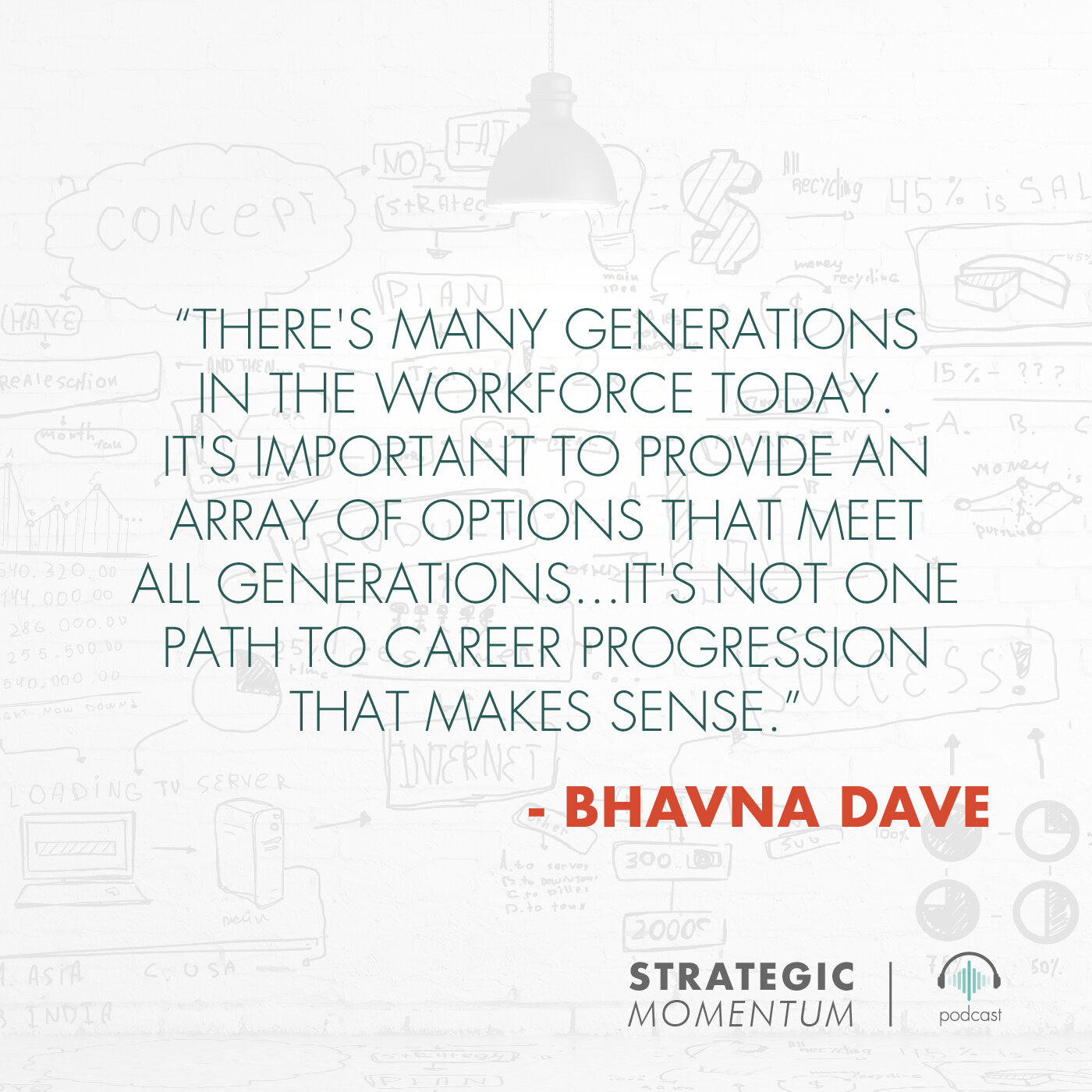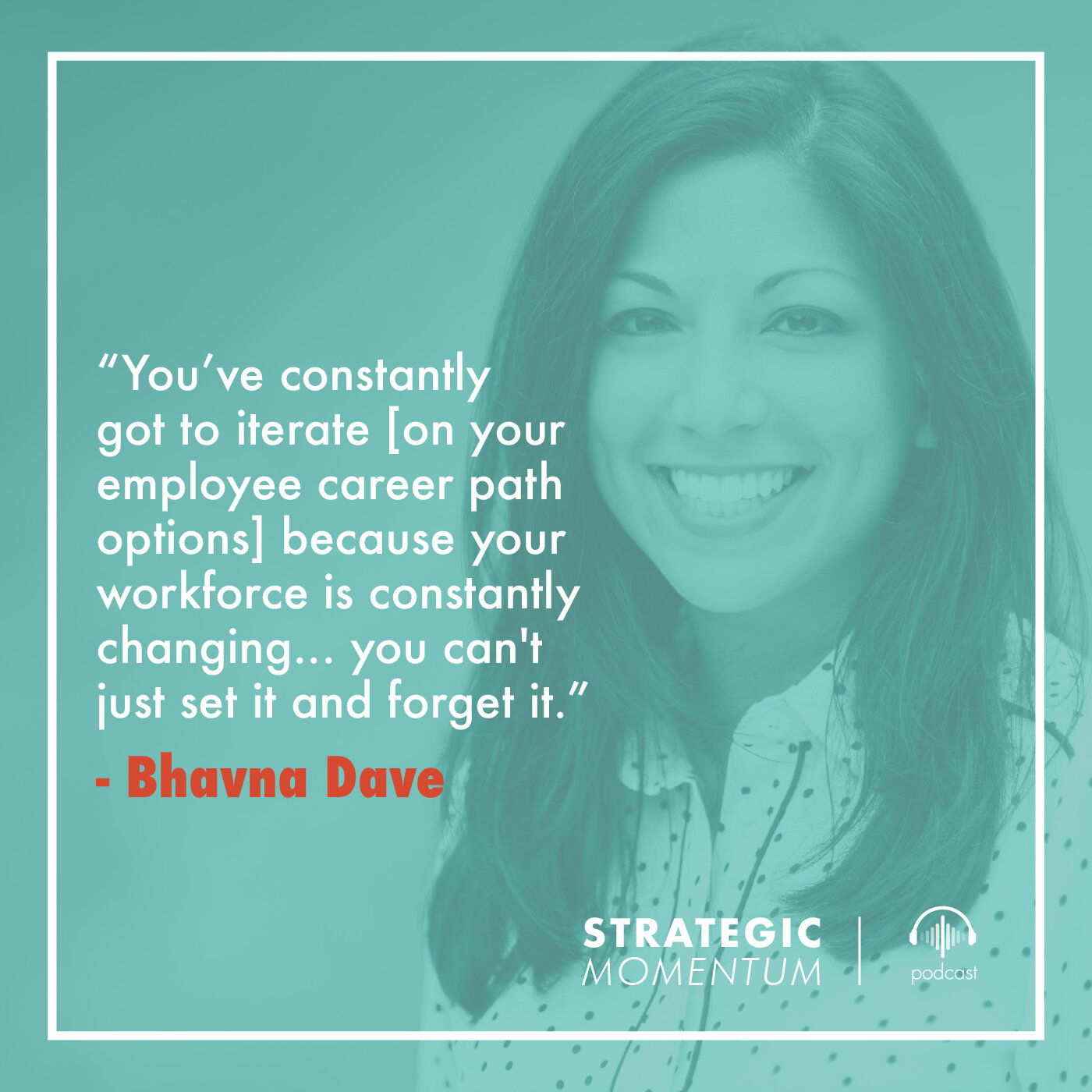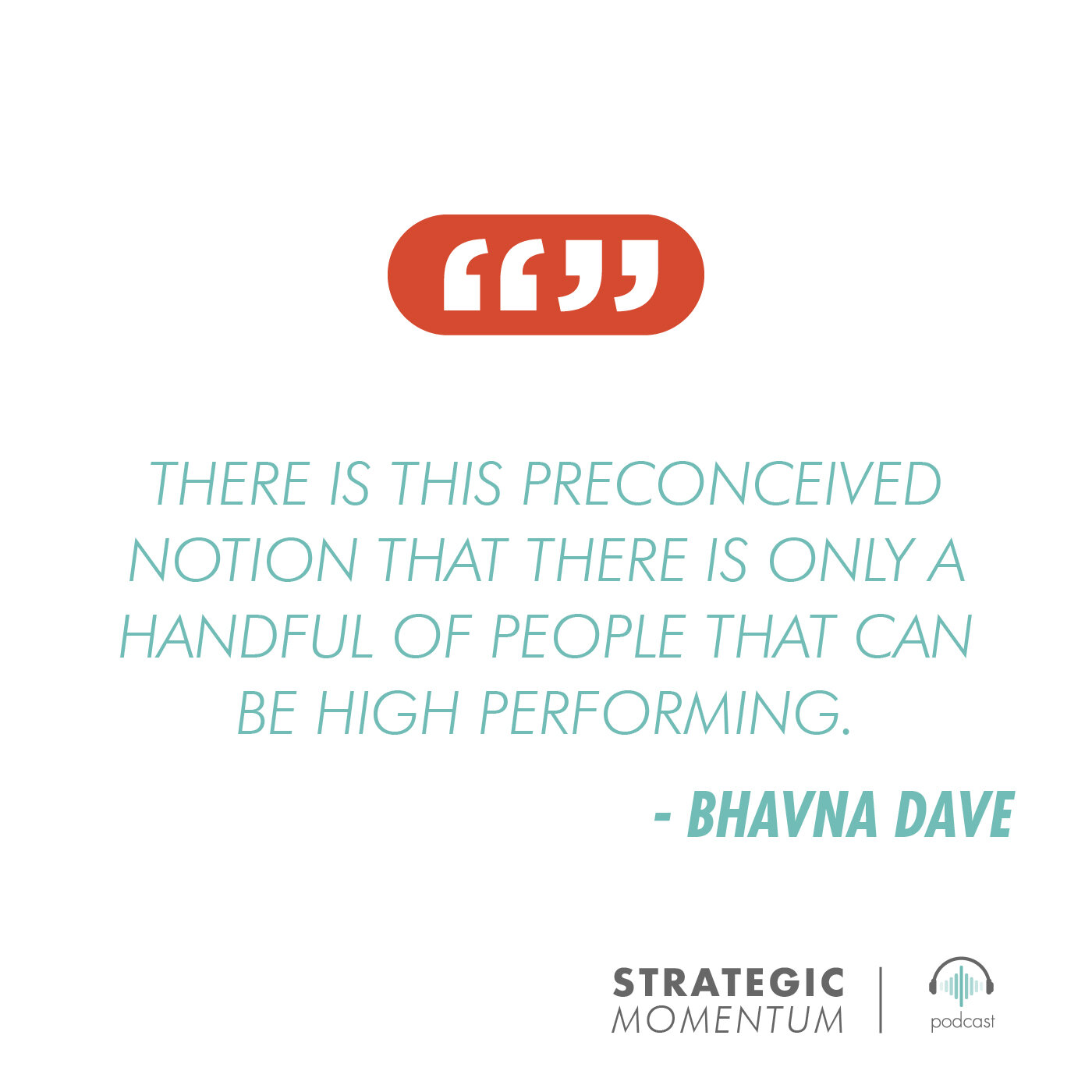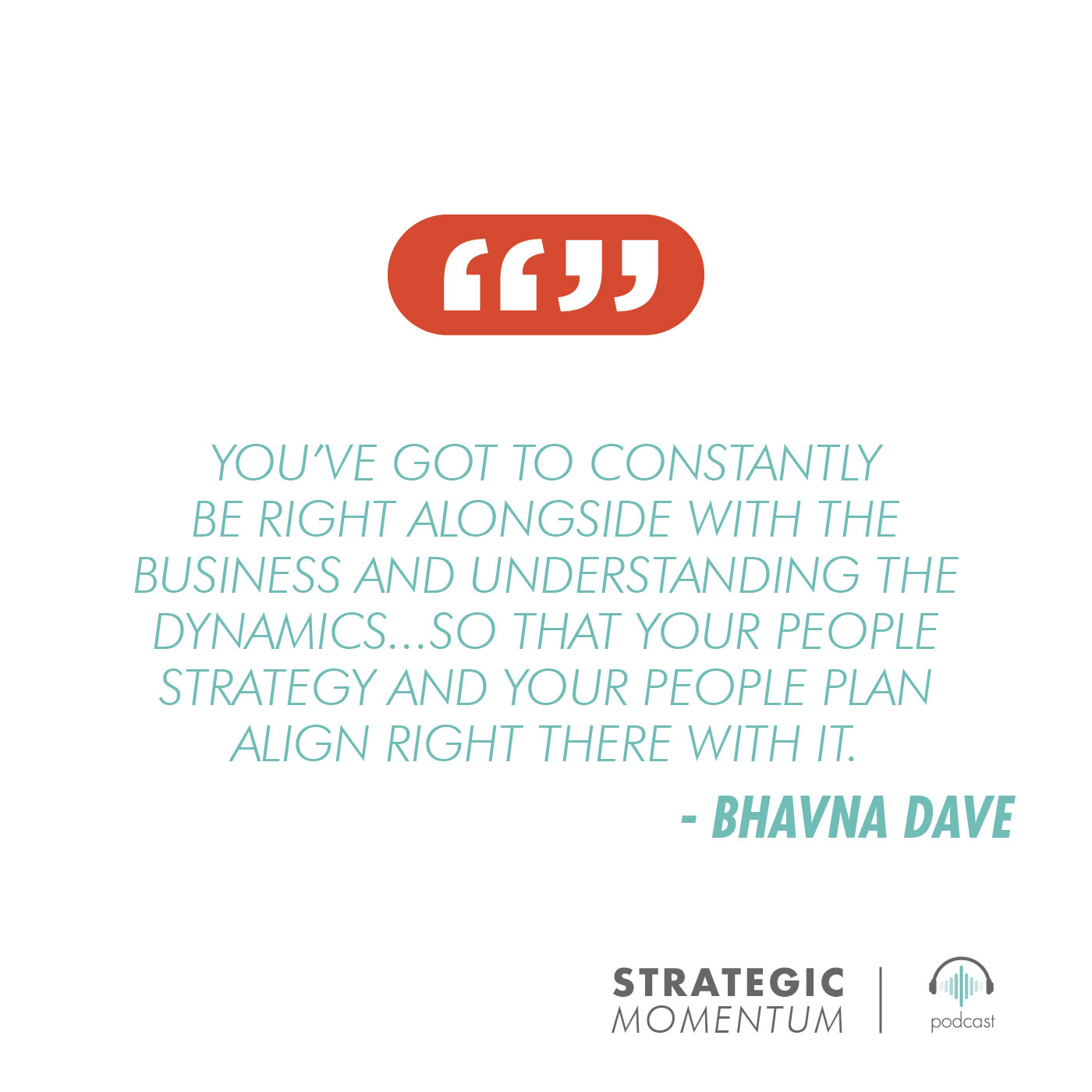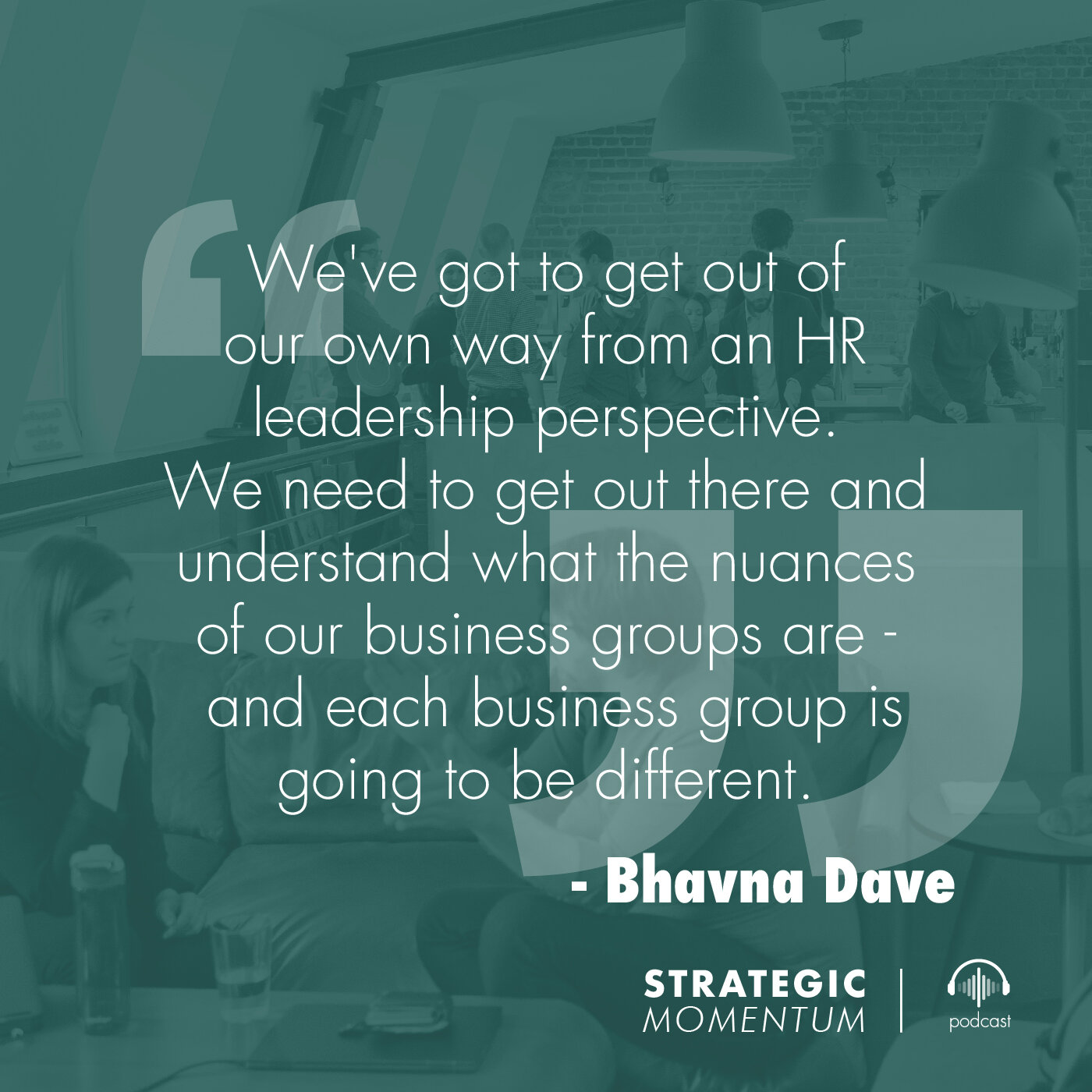Ep. 52 - Driving Impact through HR: Aligning the People Strategy with the Business Strategy - with Bhavna Dave
Find Us Wherever You Listen To Podcasts
How do you provide the right environment for your employees to flourish, while also driving your business forward?
This is a challenge many leaders struggle with as the modern workplace evolves and becomes increasingly diverse. Industry leaders are required to rethink how to best align the business dynamics with people dynamics.
For Bhavna Dave, the Chief People Officer at Frontpoint Security, helping organizations thrive by fostering the employees behind it has been her lifelong passion. She’s consistently built effective human resource functions across several high-growth companies by understanding and implementing programs that merge the business, talent and people strategy.
In this episode, she shares her insight on the current challenges faced by HR leaders in attracting, developing and retaining talent, as well as recommendations to help truly deliver business impact.
Balancing the Human Side with the Business Needs to Deliver Impact
Bhavna has always relished the process of building a business. She got a front row view into what it took as she learned from the struggles and successes her parents had in establishing their own wholesale jewelry company.
And despite her initial intention to pursue an accounting profession, she tried an Organizational Development class in college and hasn’t looked back since.
“I fell in love with the idea of helping an organization have such an impact on their business through org development, through training and development, through people within an organization.”
Early on in her HR career, Bhavna met her first mentor, who advised her that if she really wanted to make an impact in HR, she needed to get an MBA so she could understand how the business operations and financials tied into the people strategies.
That foundational learning, in addition to taking on roles where she stretched herself out of her comfort zone, took risks and applied that entrepreneurial mindset, ultimately led her to taking on opportunities to lead and develop HR organizations from the ground up. This knowledge allowed her to realize a company’s culture and environment that would support employees to reach their potential. And these pivotal experiences have shaped her approach to what she does today as well as her belief that there is a solution to any problem.
The Need to Change and Redefine Solutions for a Different Kind of Workforce
In today’s modern workplace, change is constant - and managing these from a people perspective in addition to the broader business dynamics creates new challenges for leaders throughout an organization.
With multiple-generations in the workforce, not everyone has the same mindset, needs and expectations. So as a people leader Bhavna’s stresses “we've got to find how to, as a people leader, as a talent leader, what are all those needs that we're looking at, and how do we provide the right solutions that will meet every generation because all of the generations are really important to us as we go and drive different solutions within the organization.”
It requires HR professionals to rethink how they engage and communicate with their employees as well as develop and implement programs that will align to their goals and the organization’s.
“We've got to get out of our own way a little bit from an HR leadership perspective. We need to get out there and understand what the nuances of our business groups are. And each business group is going to be different.”
Because ones’ role shouldn’t be that of a policy administrator but rather a leader that guides employees and other executive stakeholders to make the right decisions and remove obstacles.
Building Flexibility and Adaptability Through Optionality
To best support the needs of the organization, it requires a shift from a linear and tactical approach one to a more iterative and strategic one.
Create options for your employees that align to their spectrum of needs. Yet realize that they have to be flexible and adaptable because you don’t know what will ultimately be the most effective and stick.
“I think you just have to have the right [mindset] to be able to look at how you pilot programs and test your way into things and create programs that are flexible enough that you can iterate and change, so that it moves forward with your organization.”
And by being that strategic partner to your business stakeholders, and truly understanding the impacts employee programs are having or not having, HR leaders can better integrate the needs of business and the people who are driving it.
Because effective HR organizations are also no longer one-dimensional.
Bhavna’s Career Advice
“Provide the ‘why’...ask a ton of questions to get to the root cause because whatever the problem is, you've got to go layers deep. And if you don't ask the questions, you'll never get to the root cause.”
“Speak up, no matter what. It's important for every perspective to be heard. And it's really important for you to speak up. Ask your questions no matter what level you're at.
“Don't let your job description define what your impact can be. It's okay to swim outside your lane sometimes if you think that's the right thing to do for the organization, and make sure you're bringing people along with you. Don't let the job description define your impact.”
Key Takeaways:
Develop flexible solutions that will align to the varying needs of your multi-generational workforce.
As a result, you may need to rethink how we define career progression and the policies and practices in an organization - optionality is key.
To formulate these options, start by thinking about an employee’s journey just like a customer journey. Collectively map out their wants, needs and what success looks like for them to get to a successful outcome.
To realize these new programs and policies, change how you think about implementing change:
Make it simple because we tend to overcomplicate the approach in bringing them to life.
Essentially start small and test and learn along the way so you can operate in an agile and flexible way when you roll out your programs. Small, fluid processes yield visible progress faster and in the long run are more successful than large, rigid ones.
Have that ongoing two-way dialogue with your employees and leaders so that 1) they are clear on what you are doing and the impact you expect to have and 2) you garner feedback to learn if these programs are having the intended impact that everyone expected
Constantly iterate because the workforce is always changing. You can’t just set it and forget it.
Help leaders shift the management mindset around employees from purely a retention and performance perspective to one around a career lifecycle perspective.
Assist with facilitating open discussions regarding career progression or development - and that involves not viewing it in a traditional linear fashion.
Collectively work to think outside of the box and understand more holistically the paths that an employee could take whether it is inside or even outside one’s organization.
Shift your thinking around the traditional bell-shape curve mindset that only a handful of people are high-performing and as such, efforts should go into retaining this small population of them.
That internal viewpoint translates into an assumption that the market as a whole has a limited pool of talent which isn’t the case.
Rather, take an approach where you are developing the skillsets of your employee base and broadening their capabilities. By doing so, you’ll not only be creating stronger employee relationships but also creating a stronger talent pool at large whether they stay within your company or go elsewhere.
Delivering the optimal people impact in your role requires you to think about the entire business ecosystem. That involves expanding your thinking and approach to be a valued business partner to your CEO and other leaders in your organization.
Guide employees and leaders, rather than act as a policy administrator. It’s about helping them make the right decisions and removing obstacles to create the momentum for growth.
Operate at a strategic level by understanding the operations of the business, diving deep and understanding stakeholders unique needs and deliver solutions from a neutral standpoint.
Open up and maintain lines of communication across the varied business groups in your organization. This will be a key factor in spotting trends, building a positive work environment, and driving progress.
Always look for ways to adapt and improve in your profession, and apply this thinking in terms of your company in the wider market.
Remember: creating sustainable impact requires you to balance the human side with the business side.
DOWNLOAD THE EBOOK
Get the key insights and advice from this episode in a PDF presentation.








